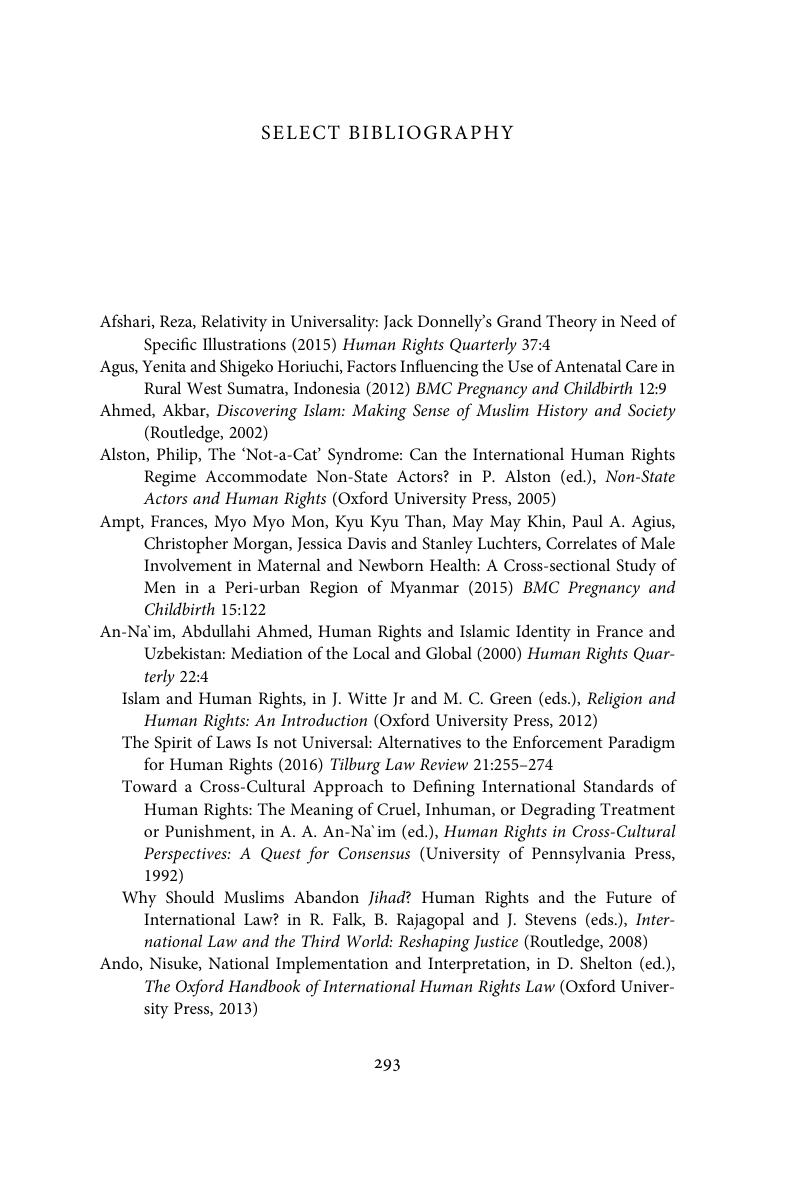Book contents
- Social Institutions and International Human Rights Law Implementation
- Social Institutions and International Human Rights Law Implementation
- Copyright page
- Dedication
- Contents
- Foreword
- Acknowledgements
- 1 Introduction: The Challenge of Human Rights Implementation
- 2 Human Rights and Their Cultural Connection
- 3 Domestic Implementation of International Human Rights Treaties: Legislative and Other Effective Measures
- 4 Domestic Implementation of International Human Rights Treaties: The Role of Public and Private Actors
- 5 Role of Islamic Law and Institutions in Implementing Women’s Right to Family Planning in Indonesia
- 6 Conclusions: Social Institutions and the Future of Domestic Human Rights Implementation
- Select Bibliography
- Index
- References
Select Bibliography
Published online by Cambridge University Press: 04 September 2020
- Social Institutions and International Human Rights Law Implementation
- Social Institutions and International Human Rights Law Implementation
- Copyright page
- Dedication
- Contents
- Foreword
- Acknowledgements
- 1 Introduction: The Challenge of Human Rights Implementation
- 2 Human Rights and Their Cultural Connection
- 3 Domestic Implementation of International Human Rights Treaties: Legislative and Other Effective Measures
- 4 Domestic Implementation of International Human Rights Treaties: The Role of Public and Private Actors
- 5 Role of Islamic Law and Institutions in Implementing Women’s Right to Family Planning in Indonesia
- 6 Conclusions: Social Institutions and the Future of Domestic Human Rights Implementation
- Select Bibliography
- Index
- References
Summary

- Type
- Chapter
- Information
- Social Institutions and International Human Rights Law ImplementationEvery Organ of Society, pp. 293 - 311Publisher: Cambridge University PressPrint publication year: 2020



